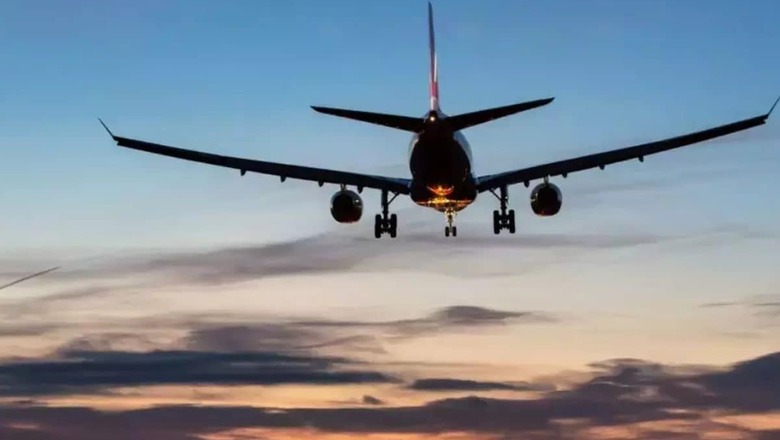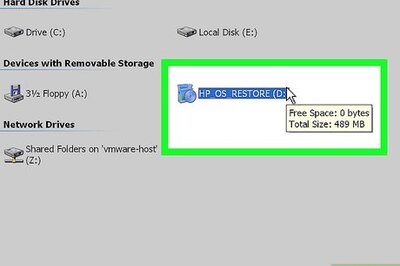
views
Disturbing trends by passengers in Air Travel
In a shocking incident in Delhi, a passenger aboard a commercial flight assaulted the pilot while he was announcing the delay, causing concern among the passengers and the aviation community in general. The incident unfolded during a routine flight when the irate passenger allegedly became aggressive and from one of the last rows came running and did what he did. This sudden and unprecedented act of violence sent shockwaves through the aviation industry, prompting immediate intervention from the cabin crew and other passengers to restrain the individual.
The swift response from the flight crew and fellow travellers ultimately prevented a potential catastrophe, and the flight was able to continue its journey safely to its destination after the unruly passenger was subdued and handed over to the authorities upon landing.
This is not the only one-off incident, however, may be the only one in India in the recent past. Over the past couple of years, in the rest of the world, there have been several distressing incidents involving passenger assaults on pilots. One such incident occurred on July 19, 2002, when a passenger assaulted the captain of American Airlines Flight 1238 during a flight from Chicago to Los Angeles. Another alarming event took place on October 15, 2013, when a passenger attacked the co-pilot on a Lufthansa flight from Munich to Budapest.
These incidents have spurred airlines and authorities to implement stricter security measures and training programs for handling disruptive passengers, emphasising the crucial importance of ensuring the safety of both crew members and fellow travellers in the skies.
Rule Position on the subject
Tokyo Convention
The Tokyo Convention, known formally as the Convention on Offences and Certain Other Acts Committed on Board Aircraft, is an international treaty that holds great significance in the realm of aviation safety and security. This convention was adopted in 1963, reflecting a global commitment to combat crimes committed on board aircraft while they are in flight (the definition of in-flight is “from the time doors are closed for taxi to take off to the time doors are opened after landing”).
In the context of India, adherence to the Tokyo Convention plays a pivotal role in safeguarding our skies and ensuring the well-being of passengers and crew. It empowers our law enforcement agencies to take appropriate action against individuals involved in unruly behaviour, hijacking, or other unlawful acts on board aircraft registered in India or operating in our airspace. Through its principles and provisions, the Tokyo Convention underscores the importance of international cooperation in maintaining the safety and security of civil aviation, aligning with India’s commitment to upholding the highest standards in aviation operations and safety.
Montreal Convention
The Montreal Convention, officially known as the Convention for the Unification of Certain Rules for International Carriage by Air, holds great significance in the field of international air travel, and its impact extends to India as well. Adopted in 1999, this treaty modernises and unifies the rules governing the liability of airlines in cases of passenger injury, baggage loss, or damage during international flights.
India, as a signatory to this convention, benefits from the harmonisation of regulations concerning air travel, making it easier for passengers to seek compensation in the event of mishaps during their journeys. The Montreal Convention reinforces the rights and protection of air travellers in our country, in that sense, it is a pro-travellers convention reflecting India’s commitment to providing safe and reliable air transport while aligning with international standards for aviation. This treaty embodies the spirit of cooperation and accountability in the global aviation community and strengthens the confidence of Indian travellers in the safety and reliability of international air travel.
Aircraft (Amendment) Act, 2020
In India, the law on dealing with unruly passengers aboard aeroplanes is governed primarily by the Aircraft (Amendment) Act, 2020. This legislation empowers both the airline crew and law enforcement agencies to take swift and decisive action against individuals who engage in disruptive behaviour during flights.
Unruly actions such as verbal or physical abuse, interference with flight operations, or endangering the safety of the aircraft and its occupants are considered serious offences under this law. In addition, the Directorate General of Civil Aviation (DGCA) has issued guidelines and procedures to address unruly behaviour and impose penalties and, a no-fly list, including fines and imprisonment, on offending passengers.
India’s commitment to ensuring the safety and security of air travel is reflected in these robust legal provisions, sending a clear message that disruptive conduct onboard aeroplanes will not be tolerated and will be met with legal consequences to safeguard the flight safety and well-being of both passengers and crew.
Understanding Nuances of What Airlines/Pilots/Air Traffic Control Centres Do
Low Visibility Takeoff
Low Visibility Takeoff operations, often referred to as LVTO, are critical procedures in aviation that are employed during adverse weather conditions such as fog, heavy rain, or low clouds when visibility on the runway is significantly reduced. In such circumstances, pilots and air traffic controllers rely on advanced instrumentation and specialised training to ensure the safe departure of an aircraft. Almost all pilots are trained for LVTO.
Key components of LVTO include the use of precision navigation equipment, enhanced runway lighting systems, and strict adherence to established departure procedures. These operations are designed to mitigate the risks associated with poor visibility and enable aircraft to take off safely, even when natural visibility is limited. The successful execution of LVTO is a testament to the aviation industry’s commitment to ensuring passenger safety and minimising disruptions caused by adverse weather conditions. Typically, the visibility requirement for LVTO is more than CAT III landing, with nearly 70-150 per cent depending on the runway and aids that are there.
CAT III Landing Operations
CAT III (Category III) landing operations represent the highest level of precision and automation in aviation for landing an aircraft in extremely low visibility conditions, such as heavy fog or dense rain. This advanced system utilises specialised ground-based instruments and onboard aircraft equipment, including autoland systems, to guide the aircraft safely to the runway with minimal visibility for the flight crew.
CAT III operations were, in the past categorised into three sub-levels: CAT IIIA, CAT IIIB, and CAT IIIC. However, today, CAT III has only two sub-categories namely CAT III (with DH) and CAT III (without DH), both are typically an Autoland scenario. Each with varying levels of allowable visibility and decision heights for the pilot. These highly sophisticated systems provide an added layer of safety and efficiency, allowing flights to continue even when natural visibility is severely compromised. CAT III landing operations exemplify the remarkable technological advancements in aviation, enabling safe and reliable landings in adverse weather conditions, and enhancing both passenger safety and air travel reliability.
How is visibility measured?
It is measured by automatic equipment called a transmissometer, which is a critical instrument used in meteorology and aviation to measure the attenuation or reduction of light or laser beams as they pass through the atmosphere. This instrument is essential for assessing visibility conditions, particularly in situations of low visibility due to fog, mist, smoke, or other atmospheric obscurants.
Transmissometers provide real-time data on visibility levels that are crucial for pilots during takeoff, landing, and taxiing. They work by emitting a light beam and measuring how much of it reaches a receiver after passing through the atmosphere. This data aids aviation authorities in determining the appropriate category of instrument landing systems (ILS), such as CAT III. The accurate and timely information obtained from transmissometers plays a vital role in enhancing aviation safety and efficiency.
What if the visibility is low?
It’s simple. If the visibility is low, but not low enough for CAT III landing to take place, landings will continue. However, if the visibility is low for LVTO and not for CAT III landing, take-offs will not happen, however, landings will continue. If the visibility is very low, no take-offs or landings can be carried out, in the interest of aircraft and passenger safety.
When visibility at the airport is low, and take-offs are not permitted due to adverse weather conditions, both air travellers and airlines need to take appropriate actions to ensure passenger safety and minimise disruptions. Passengers should stay informed about flight status updates through airline apps or airport announcements and be prepared for potential delays or cancellations. It’s advisable for travellers to check weather conditions at both their departure and destination airports before heading to the airport, allowing them to make informed decisions.
What should air travellers and airlines do when the visibility is low and take-offs are not permitted?
Passengers should check the weather and leave home only when they get an assurance that they won’t be stuck at the airport. At the airport, they should remain calm and go with the flow. After all, we can’t fight the nature and weather. Airlines, on the other hand, should prioritise passenger comfort and safety by providing timely and transparent information regarding flight delays or cancellations. They should offer affected passengers alternative flight options, accommodations, and meals, as required.
Additionally, airlines should have contingency plans in place to manage the situation effectively, including rebooking passengers on the next available flights and providing clear communication channels for passengers to seek assistance or information. Ultimately, collaboration between passengers and airlines during such adverse conditions is essential to ensure a smoother and more comfortable airport experience when take-offs are not permitted due to low visibility.
Be calm, be kind and make logical decisions. Remember, sar salamat, toh pagdi hazaar.
Group Capt MJ Augustine Vinod VSM (retd) tweets at @mjavinod; Vineet Maliakal is COO, AutoMicroUAS. Views expressed in the above piece are personal and solely that of the author. They do not necessarily reflect News18’s views.


















Comments
0 comment